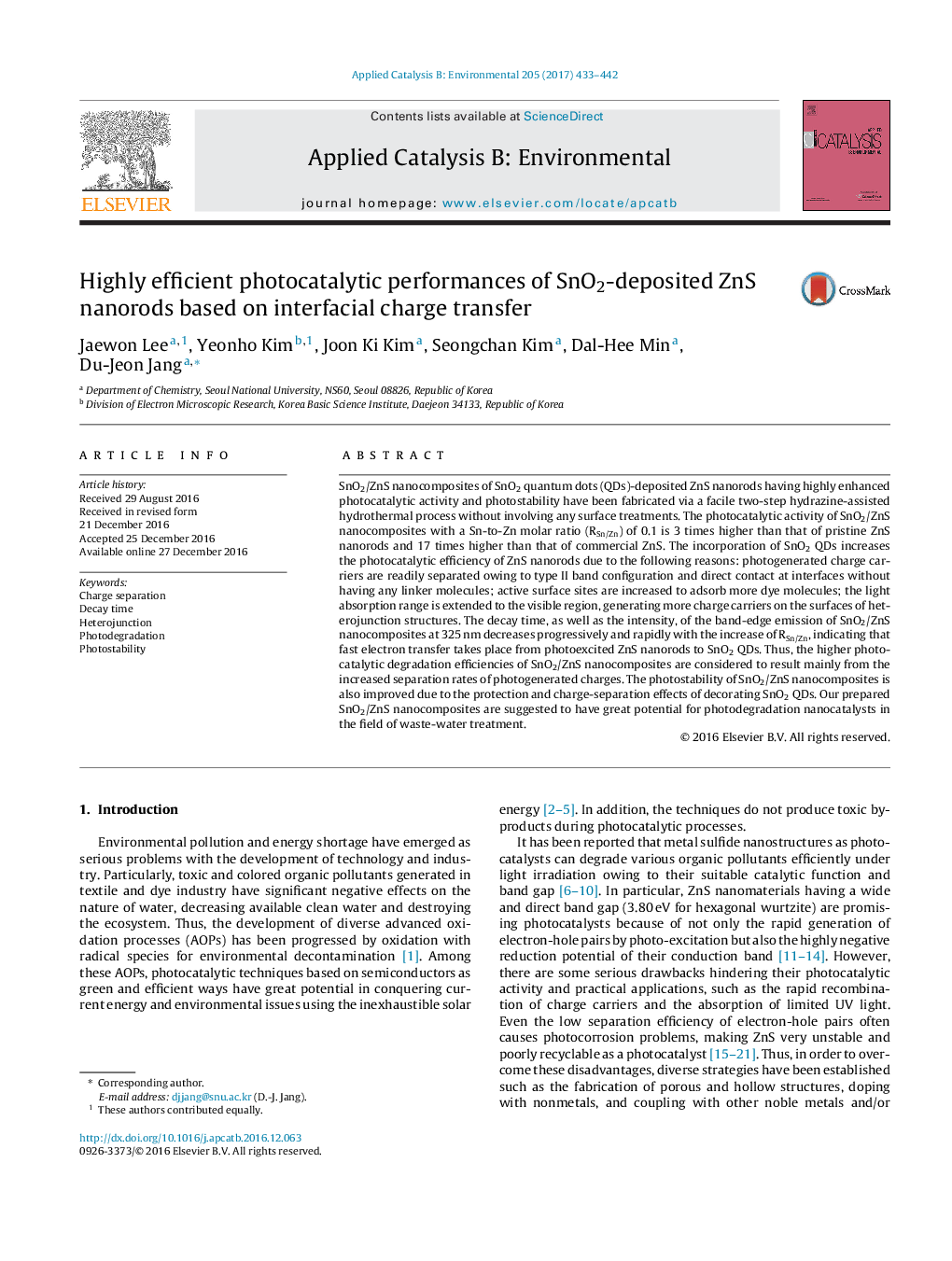| Article ID | Journal | Published Year | Pages | File Type |
|---|---|---|---|---|
| 6454359 | Applied Catalysis B: Environmental | 2017 | 10 Pages |
â¢SnO2/ZnS nanocomposites were prepared by a hydrazine-assisted hydrothermal method.â¢SnO2/ZnS nanocomposites catalyze the photodegradation of rhodamine B efficiently.â¢A type-II heterojunction structure is formed between SnO2 and ZnS.â¢The heterojunction structure leads to an efficient separation of eâ and h+.â¢The decoration of SnO2 on the ZnS improves the photostability of nanocomposites.
SnO2/ZnS nanocomposites of SnO2 quantum dots (QDs)-deposited ZnS nanorods having highly enhanced photocatalytic activity and photostability have been fabricated via a facile two-step hydrazine-assisted hydrothermal process without involving any surface treatments. The photocatalytic activity of SnO2/ZnS nanocomposites with a Sn-to-Zn molar ratio (RSn/Zn) of 0.1 is 3 times higher than that of pristine ZnS nanorods and 17 times higher than that of commercial ZnS. The incorporation of SnO2 QDs increases the photocatalytic efficiency of ZnS nanorods due to the following reasons: photogenerated charge carriers are readily separated owing to type II band configuration and direct contact at interfaces without having any linker molecules; active surface sites are increased to adsorb more dye molecules; the light absorption range is extended to the visible region, generating more charge carriers on the surfaces of heterojunction structures. The decay time, as well as the intensity, of the band-edge emission of SnO2/ZnS nanocomposites at 325Â nm decreases progressively and rapidly with the increase of RSn/Zn, indicating that fast electron transfer takes place from photoexcited ZnS nanorods to SnO2 QDs. Thus, the higher photocatalytic degradation efficiencies of SnO2/ZnS nanocomposites are considered to result mainly from the increased separation rates of photogenerated charges. The photostability of SnO2/ZnS nanocomposites is also improved due to the protection and charge-separation effects of decorating SnO2 QDs. Our prepared SnO2/ZnS nanocomposites are suggested to have great potential for photodegradation nanocatalysts in the field of waste-water treatment.
Graphical abstractDownload high-res image (145KB)Download full-size image
